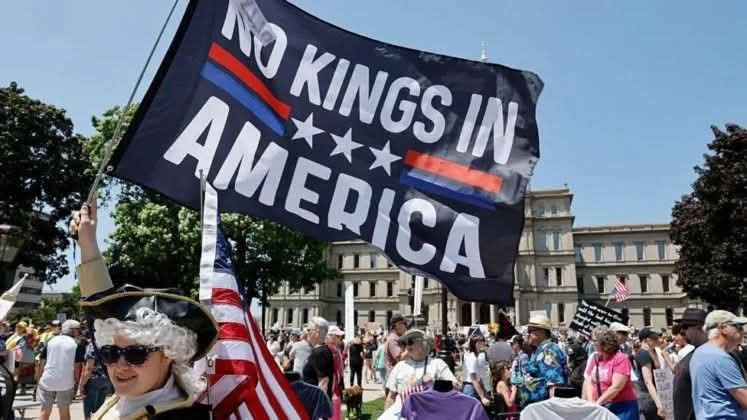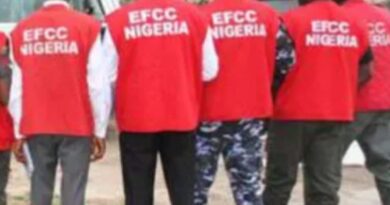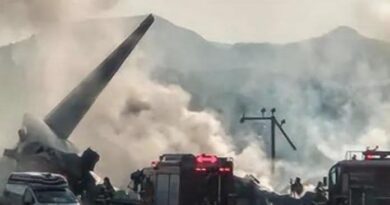Millions of Americans troop out in continuation of No Kings’ protests against Trump
Millions of Americans rallied across cities and towns Saturday in nationwide protests against President Donald Trump’s leadership, timed to coincide with a large-scale military parade in the nation’s capital.
Dubbed the “No Kings” protests, the coordinated demonstrations criticized what organizers describe as Trump’s authoritarian overreach during his second term in office.
Events unfolded in more than 200 cities, including Los Angeles, New York, Philadelphia, Houston, and Lansing, Michigan.
The protests were sparked not only by the president’s rare military display, held on his 79th birthday and the U.S Army’s 250th anniversary, but also by outrage over his administration’s stepped-up deportation raids and immigration crackdowns.
In Los Angeles, where tensions have been high for days, confrontations broke out between protesters and National Guard troops, prompting the use of tear gas.
In Philadelphia, thousands gathered in Love Park to hear activists and local leaders speak.
“We need to defend our democracy,” said Karen Van Trieste, a 61-year-old nurse who cited Trump’s cuts to public health agencies as a personal motivator.
Despite warnings from the president that protests near the parade would be met with “heavy force,” peaceful marches continued near federal buildings and public parks around the country.
However, some violence flared in Los Angeles, where National Guard troops, deployed over Governor Gavin Newsom’s objections, clashed with demonstrators.
Jose Azetcla, a member of the Brown Berets civil rights group, said immigration was the key issue: “It’s not harsh, it’s evil. You don’t separate families.”
Meanwhile, in Washington, D.C., Trump stood saluting rows of soldiers, tanks, and military vehicles marching past.
The parade, the first of its kind since 1991, was criticized by some lawmakers and former military leaders as an expensive show of political power, with an estimated cost between $25 million and $45 million.
Trump addressed the crowd briefly, saying, “Our soldiers never give up. Never surrender and never, ever quit. They fight, fight, fight. And they win, win, win.”
Not all in attendance were there for politics. Vietnam veteran Melvin Graves said he never received a welcome-home parade after his service and saw this event as long-overdue recognition. “This is about honoring those who served,” he said.
Still, the optics of a military show of force on the same day soldiers were deployed to confront protesters raised concerns. “The polarization around immigration and the visible presence of armed troops in our cities casts a shadow over the parade,” said security analyst Barbara Starr.
Though the “No Kings” protests were mostly peaceful, events in Minnesota were scaled back after law enforcement found flyers for the demonstrations in the car of a man suspected of fatally shooting a state legislator and her husband. Governor Tim Walz urged a pause in public gatherings, though thousands still turned out.
Despite the large turnout, public opinion on immigration remains divided. A CBS/YouGov poll released last week showed 54% of Americans support Trump’s policy of deporting undocumented immigrants, while 46% oppose it.
Critics say the “No Kings” movement reflects growing concern over Trump’s use of executive power.
Supporters, however, argue that the military parade was a patriotic celebration and a long-overdue show of gratitude toward the armed forces.
As the night ended, fireworks lit up the skies over the National Mall.
But across the country, the demonstrations served as a reminder that in a deeply polarized America, both the battle lines and the voices of resistance are firmly drawn.





